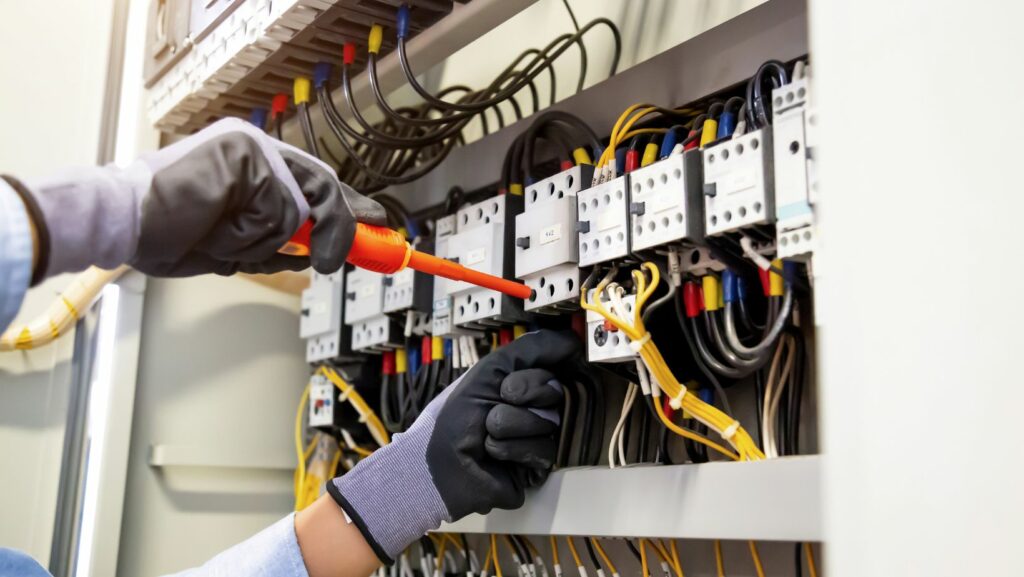Surge protection plays a critical role in maintaining the stability and longevity of commercial electrical systems. In today’s interconnected and technology-driven world, businesses rely heavily on uninterrupted power supply to sustain operations. Electrical systems’ vulnerability to surges necessitates robust protective measures to safeguard equipment, prevent downtime, and mitigate potential financial losses. We will delve into the significance of surge protection in commercial settings, highlighting its key benefits and the mechanisms involved in safeguarding against electrical surges through professional commercial electrical services yakima.
The Nature of Electrical Surges and Their Impacts
Electrical surges, often caused by lightning strikes, power grid fluctuations, or internal factors within the building’s electrical system, pose significant risks to commercial establishments. These surges can vary in intensity and duration, capable of damaging sensitive electronic devices such as computers, servers, and communication equipment. Beyond immediate damage, recurrent surges can degrade equipment over time, leading to frequent repairs and premature replacements. This underscores the importance of proactive surge protection strategies to ensure operational continuity and cost-effectiveness in commercial environments.
Understanding Surge Protection Devices (SPDs)
Surge protection devices (SPDs) are pivotal in defending commercial electrical systems against transient voltage spikes. SPDs function by diverting excess electrical energy from sensitive equipment, preventing surges from reaching damaging levels.

They are designed to respond swiftly to sudden voltage increases, ensuring that only safe levels of electricity flow through to connected devices. SPDs come in various forms, including plug-in devices, panel-mounted units, and whole-building surge protectors, each tailored to specific applications and installation requirements.
Integration with Building Electrical Infrastructure
Integrating surge protection seamlessly into a commercial building’s electrical infrastructure is crucial for maximizing effectiveness. This involves strategically placing SPDs, such as primary distribution panels and subpanels, at critical points where electrical service enters the building. Coordination with existing grounding systems is essential to facilitate the safe dissipation of excess voltage. Additionally, regular inspection and maintenance of SPDs ensure their continued functionality and readiness to respond to potential surges, thereby bolstering the resilience of the overall electrical system.
Benefits of Surge Protection in Commercial Environments
The benefits of surge protection extend beyond mere equipment protection to encompass broader operational advantages for businesses. By minimizing downtime caused by electrical failures, businesses can maintain productivity and meet operational targets without disruption. Moreover, the longevity of electronic equipment is enhanced, reducing the frequency of costly repairs and replacements. This reliability improves customer satisfaction and operational efficiency, reinforcing the business’s competitive edge in a dynamic marketplace.
Emerging Trends in Surge Protection Technology
Advancements in surge protection technology continue to shape the landscape of commercial electrical systems. One notable trend is the development of smart SPDs equipped with monitoring and diagnostic capabilities. These devices offer real-time insights into electrical conditions, enabling proactive maintenance and swift response to potential surge events.

Additionally, integration with building automation systems allows for automated shutdowns or alerts in the event of critical surges, further enhancing system reliability and minimizing downtime. Furthermore, modular SPD designs facilitate scalability, allowing businesses to expand their surge protection capacity as their operations grow or as new technologies are adopted.
Regulatory and Insurance Implications
Regulatory standards and insurance requirements underscore the importance of surge protection in commercial environments. Many regulatory bodies mandate the installation of surge protection devices in commercial buildings to ensure compliance with safety and operational standards. Insurance providers also recognize the role of surge protection in mitigating risks, potentially offering incentives or reduced premiums to businesses that implement comprehensive surge protection measures. Compliance with these regulations enhances safety, reduces liability exposure, and supports insurance coverage in the event of electrical incidents.
Educating Stakeholders on Surge Protection
An often overlooked aspect of surge protection is educating stakeholders within commercial enterprises. From facilities managers to IT personnel and business owners, understanding the risks associated with electrical surges and the benefits of surge protection is crucial. Training programs and awareness campaigns can empower stakeholders to recognize signs of potential electrical issues, implement preventive measures, and respond effectively to surge-related incidents. By fostering a culture of proactive maintenance and risk management, businesses can strengthen their resilience against electrical disruptions and optimize the performance of their electrical infrastructure.
Surge protection is a cornerstone of resilience for commercial electrical systems, safeguarding valuable equipment and ensuring continuous business operations. By mitigating the risks posed by electrical surges, businesses protect their investments and uphold their commitments to reliability and service excellence. As technology advances and dependence on electronic systems grows, the role of surge protection in commercial settings becomes increasingly indispensable. Implementing robust surge protection measures shields businesses from potential financial losses and bolsters their overall operational efficiency and customer satisfaction.


More Stories
Is Vinyl Flooring a Safe Option for Homes with Pets or Kids? Expert Insights
Touch ‘N Go Casino Payments
The Psychology of Esports Fans: What drives loyalty and engagement?